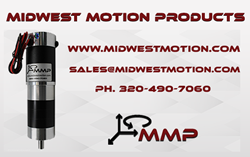Diakont's Completes Successful Underwater Robotic Decontamination Service, Demonstrating New Dose-Saving and Outage-Shortening Technology
Diakont successfully provided underwater robotic decontamination services on a nuclear power plants refueling cavity and dryer-separator pool in Spring 2017 using a new tool system.
Diakont, a leading provider of refueling outage tooling and services to the nuclear industry, successfully provided underwater robotic decontamination services on a nuclear power plants refueling cavity and dryer-separator pool in Spring 2017 using a new tool system. Historically, nuclear plant operators have conducted cleaning and decontamination of these surfaces manually, after draining water from the space. However manual decon is slow, and can result in excessive personnel dose exposure. Diakonts underwater robotic decon services present a vast improvement over manual decon because it reduces personnel dose exposure, reduces radwaste, doesnt impact plant chemistry, and doesnt risk inadvertently spreading contamination. Also Diakonts decon method avoids the risk of personnel injury and component damage associated with hydrolasing. And by performing the decon robotically while the cavities are flooded, in many cases the critical path outage schedule can be shortened.
The ROV-type decontamination tool attaches and drives along the cavity and component surfaces using a high-force, no-flow vortex generator, even in the presence of Residual Heat Removal (RHR) or shutdown cooling flow. Efficient, effective cleaning is performed using a rugged brushing action to detach the crud, while vacuuming it away at high flow rates to a submerged filter.
At the Spring 2017 refueling outage, Diakonts decontamination services were so effective that no additional manual cavity decon was required after drain-down. Using the tools ability to swim, attach, and crawl, Diakont decontaminated the majority of the surfaces designated by the plant operator. Preliminary surveys indicated that all contamination levels were reduced to <50K dpm/100 cm2, helping the utility meet their INPO/Industry collective radiation exposure goals.
Applications
Diakont cleaning and decontamination services are ideal for servicing various underwater areas within nuclear power plants:
Refueling cavity
BWR-6 drywell head, and other curved surfaces
Equipment pools/pit
Spent fuel pool
Cask loading pool
Fuel transfer canal
"Diakonts remote decontamination service helped the plant operator meet the INPO/Industry collective radiation exposure goals," says Jacco Goemans, Director of Nuclear Solutions for Diakont. "Diakonts new robotic tooling paves the way for plant operators to perform a safer, more efficient, and more effective method of reactor plant decontamination."
About Diakont
Diakont is a leading designer, manufacturer and provider of high-technology products and services for the nuclear power industry, providing radiation-tolerant cameras and robotics, as well as inspection, maintenance and repair services for plants of all designs. With a mission of enhancing safety while improving the overall efficiency of the nuclear industry, Diakont has been deploying state-of-the-art robotics and world-class service to solve inspection and repair challenges for over 25 years.
Featured Product

